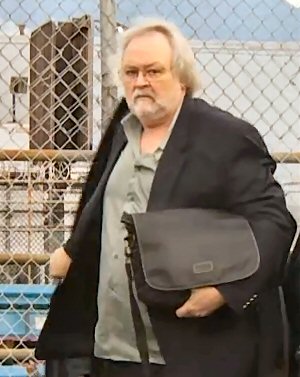U.S. Businessman Takes First Nation People for $2.5 Million

April 8, 2013 – By Steven B. Krivit –
The Canadian Broadcasting Corp.’s “Fifth Estate” program about former LENR researcher Russ George aired on March 29. (See New Energy Times article: “CBC-TV Investigates Former LENR Researcher Russ George.”) Here are some of the highlights of the show.
Last year, George used his knowledge of science and his salesmanship to convince an indigenous community off the coast of Canada to part with its $2.5 million trust fund to fund George’s untested — at the time — and still unproven ocean-seeding concept.
Several years ago, George had tried to perform a similar large-scale ocean-seeding experiment to test whether plankton blooms, artificially enriched by iron dust, would capture and permanently sequester carbon dioxide from the atmosphere.
However, Paul Watson, founder and president of Sea Shepherd Conservation Society and founding director of Greenpeace, chased George around the world and notified local environmental groups and governments wherever George went.
Those governments issued orders to George forbidding performance of his experiments. Environmental organizations issued new conventions to prevent such experiments.
The U.S. Environmental Protection Agency warned George that he would be violating U.S. laws if he went through with his iron dumping plan. Eventually, George ran out of options and money and abandoned his plan and ship, the Weatherbird II.
Soon after, he found a First Nations community, the Old Massett Haida Gwaii village, and learned that its members were desperate for new economic development and a solution to return salmon levels to normal. George also learned that they had a $2.5 million trust fund.
George and John Disney, a local collaborator in the Old Massett village, formed a company called the Haida Salmon Restoration Corp. Together, they convinced the community that George’s untested plan would certainly a) capture carbon from the atmosphere, b) sequester carbon permanently, and c) provide marketable carbon credits to sell for several million dollars more than their initial investment.
George and Disney also told the community that the simple act of his iron dump in the ocean would bring salmon levels back.
George had no direct scientific evidence to support his pitches. He took existing scientific data from other events and research and applied that to his sales pitch. He did the deed, and in fact a plankton bloom was observed during the period, but there is no direct evidence that the plankton bloom was caused by George’s dump.
More important, there is no evidence of any permanent carbon sequestration, and nobody is buying any carbon credits from George, his company or the village.
The chief of the community and owner of a coffee shop, Ken Rea, and Disney believed everything George told them. Rea said he learned new things about science, like the word “hypothesis.”
Gillian Findlay, the host for the program, sums up the program.
“In Old Masset,” Findlay said, “their $2.5 million is gone, there will be no carbon credit return, and as for the fish, even if there is another bumper harvest some year, who will ever be able to say it was because of the iron?”
Old Massett resident Gloria Tauber says that history may have repeated.
“When I saw that,” Tauber said, “I fully understood how our ancestors gave away our land for beads and blankets, because it was so easy to convince some of them. … I hope this goes somewhere, that something is done out of it to set a precedent that this is not acceptable and that people shouldn’t be blinded by greed.”
On March 29, when the show aired, CBC reported that the Canadian government issued search warrants for Russ George’s company. Dumping anything in the ocean is a violation of Canadian law. The loophole is that the law allows for scientific experiments.
George and his colleagues have declined to disclose their scientific methods, identify their panel of “gold-star scientists” who oversaw the project or release their data.
No aspect of George’s or his associates’ behavior is consistent with scientific protocol. George will also have difficulty proving this was a scientific experiment, considering that he pitched it as an investment opportunity to the local residents.
Journalist Steven B. Krivit provided background information and video footage of George to CBC and spoke on the show. George claims to be a scientist, however, Krivit learned that George did not obtain a degree in science and did not graduate from college although he attended the University of Utah for two years.
Krivit warned viewers that, if presented with scientific-sounding claims from George, they should demand to see the evidence.
To be continued.
Questions? Comments? Submit a Letter to the Editor.

